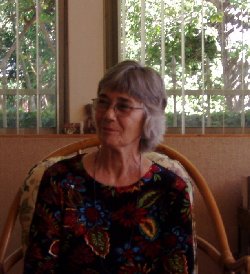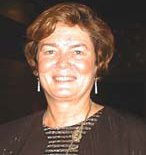LET'S GET IT STRAIGHT: THE ORIGINS OF THE WOMEN'S STUDIES PROGRAM
AT SAN DIEGO STATE UNIVERSITY, 1969-1970
BY JOYCE NOWER, Ph.D.
http://www.joycenower.com
Adapted and abridged from a guest lecture to Women's Studies 601, SDSU, Fall 2007
(for the full text contact Joyce Nower at jnower@mail.sdsu.edu)
Introduction
The Women's Movement came into being within a larger context of social change which touched each of us women who formed, here at San Diego State, the first women's studies program in the nation.
How did it start?
 |
Our CR group quickly grew and in the summer of 1969 we developed a plan for the Center for Women's Studies and Services, with the following components: Academic, Research, Publications, Recruitment (for older and poor women), Tutorial, Cultural, Child Care, and a Community Storefront. The first component would be a women's studies program.
Wading Through the Bureaucracy
To get a program of studies approved required mammoth amounts of footwork. From October through December of 1969, the Ad Hoc Committee for Women's Studies (all undergraduates and one part-time faculty person, myself), an offshoot of the original rap group, did this work in an effort coordinated by a 19-year-old junior, Carol Rowell. We persuaded a few sympathetic professors to focus one of their classes on women or to "lend" a class for us to teach. The turnout confirmed that interest was high.
On February 10 we formally presented to Donald Walker, V.P. for Academic Affairs, the Proposal for a Center for Women. The presentation was followed by a press conference.
Th
 |
By the end of February, approval of the Academic Component had come from the Vice-Presidents for Academic and Administrative Affairs, the School of Arts and Letters, and, by March 30, from the Council of Deans. Seed money came from the Student Council and from the School of Arts and Letters. Minimal seed money also came from the San Diego State Foundation. On May 22, 1970, the Academic Component of the Center was finally approved by the Faculty Senate.
The Splits
In late summer hostilities began. It was painful and confusing to realize that many of the attackers were simply women who, having been all their lives pressed into subservient roles, now perceived any attributes such as greater knowledge, organizing skills, leadership, willingness to learn about budgets, and so on, as being a hangover of male-like "top-down" authority and hierarchy; this mode of attack was known as "leveling." Accusations of "elitism," "non-representation," "top down control," "authoritarian leadership style," "hierarchical structure," "sleeping with the enemy," "you don't represent all women," (as if we claimed to), and many more were vented against us.
To find out how this conflict was resolved and how, eventually, the SDSU Department of Women's Studies became the respected institution it is today, and what happened to CWSS, you can contact Joyce Nower at jnower@mail.sdsu.edu for a complete copy of the text.